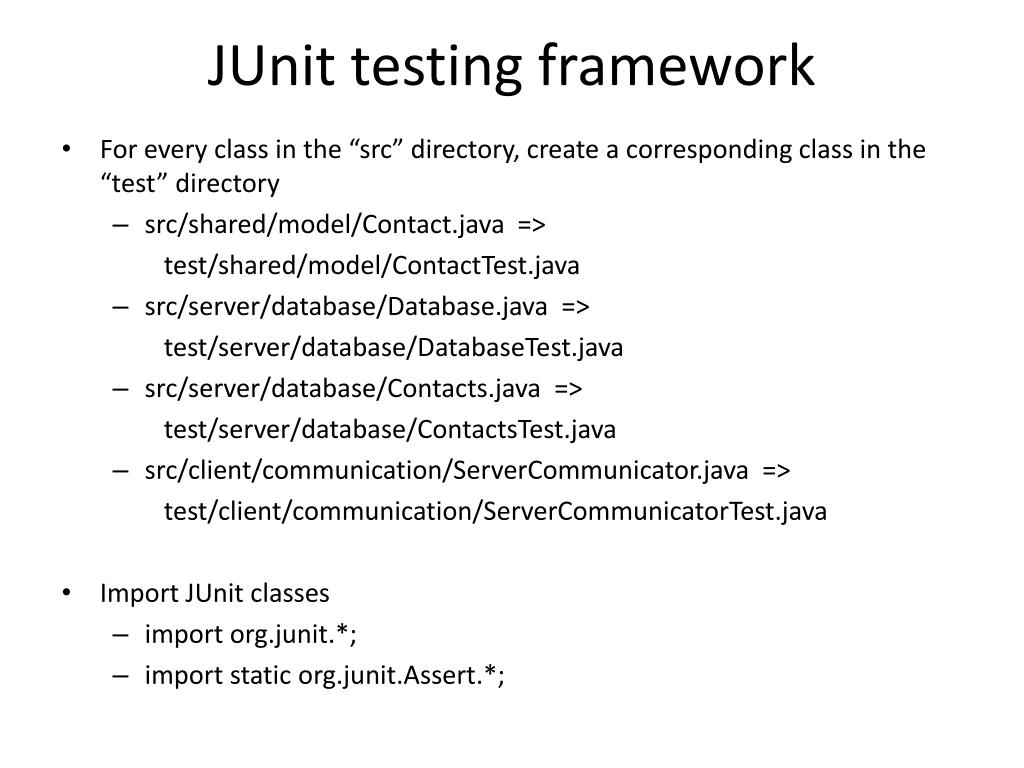Mocking in JUnit: Using Mockito for Successful Unit Testing
In the particular realm of computer software development, ensuring of which your code will be robust and bug-free is crucial. Product testing plays a substantial role in this kind of process by validating features of individual components in remoteness. One of many powerful equipment for unit tests in Java is usually JUnit, a well-liked framework that helps test-driven development. Any time combined with Mockito, a leading mocking framework, JUnit gets more effective, permitting developers to make precise and dependable unit tests. This post will guide you by way of the fundamentals associated with mocking in JUnit using Mockito, delivering practical insights in addition to examples to enhance your unit testing approach.
1. Understanding typically the Principles
JUnit is definitely a widely used testing framework within the Coffee ecosystem. It allows developers to write and execute tests, guaranteeing that code reacts as expected. Mockito, alternatively, is some sort of mocking framework that helps simulate the behavior of complex things and dependencies, making it simpler to test individual components in seclusion.
Mocking is necessary in unit testing as it enables you to:
Isolate Dependencies: Test a class inside isolation by changing its dependencies along with mock objects.
Handle Behavior: Simulate diverse scenarios by determining the behavior of mock objects.
Verify Interactions: Check if the category under test interacts with its dependencies as expected.
2. Establishing Your Surroundings
To work with Mockito along with JUnit, you will need to add the mandatory dependencies to your project. For Expert, include the following throughout your pom. xml file:
xml
Copy code
For Gradle, add the subsequent outlines to your develop. gradle file:
groovy
Copy code
dependencies
// JUnit dependency
testImplementation ‘junit:junit:4.13.2’
// Mockito dependency
testImplementation ‘org.mockito:mockito-core:4.8.0’
// Mockito JUnit Jupiter dependency (for JUnit 5)
testImplementation ‘org.mockito:mockito-junit-jupiter:4.8.0’
3. Creating Your First Mockito Check
Let’s commence with a straightforward illustration. Suppose you have a UserService class that will depend on a UserRepository to fetch customer data from some sort of database.
UserService. coffee
java
Copy computer code
public class UserService
private UserRepository userRepository;
public UserService(UserRepository userRepository)
this.userRepository = userRepository;
public User getUserById(int id)
return userRepository.findById(id);
UserRepository. java
coffee
Copy code
public interface UserRepository
User findById(int id);
To test UserService using Mockito, you would:
Create a mock UserRepository.
Determine read the full info here .
Verify that UserService interacts with UserRepository correctly.
UserServiceTest. java
java
Copy code
import stationary org. mockito. Mockito. *;
import static org. junit. State. *;
import org. junit. Before;
transfer org. junit. Test out;
import org. mockito. InjectMocks;
import org. mockito. Mock;
importance org. mockito. MockitoAnnotations;
public class UserServiceTest
@Mock
private UserRepository userRepository;
@InjectMocks
private UserService userService;
@Before
public void setUp()
MockitoAnnotations.initMocks(this);
@Test
public void testGetUserById()
User mockUser = new User(1, “John Doe”);
when(userRepository.findById(1)).thenReturn(mockUser);
User result = userService.getUserById(1);
assertNotNull(result);
assertEquals(“John Doe”, result.getName());
verify(userRepository).findById(1);
In this particular example:
@Mock makes a mock occasion of UserRepository.
@InjectMocks creates an example of UserService and injects the mock UserRepository into it.
MockitoAnnotations. initMocks(this) initializes the mock objects.
when(userRepository. findById(1)). thenReturn(mockUser) specifies the behavior involving the mock item.
verify(userRepository). findById(1) checks that the technique was called with all the specified arguments.
4. Advanced Mocking Strategies
Mockito offers sophisticated features to take care of more complex scenarios:
Stubbing Void Methods: Make use of doNothing() or doThrow() for void methods.
espresso
Copy signal
doNothing(). when(mockedObject). voidMethod();
doThrow(new RuntimeException()). when(mockedObject). voidMethod();
Argument Matchers: Use matchers to handle flexible discussion values.
espresso
Backup code
when(mockedObject. someMethod(anyInt())). thenReturn(someValue);
Spying about Real Objects: Make use of spy() to place real objects plus partially mock all of them.
java
Copy signal
List
List
spyList. add(“one”);
verify(spyList). add(“one”);
Answering Calls: Implement custom behavior for method telephone calls using Answer.
java
Copy program code
when(mockedObject. someMethod(anyInt())). thenAnswer(invocation ->
Integer arg = invocation.getArgument(0);
return arg * 2;
);
5. Guidelines intended for Effective Mocking
In order to ensure that your current unit tests are both effective plus maintainable, consider the following best practices:
Keep Tests Concentrated: Each test ought to verify an individual conduct or scenario.
Lessen Mock Complexity: Prevent creating complex make fun of setups unless essential.
Use Descriptive Labels: Name mocks and even methods clearly to convey their goal.
Avoid Over-Mocking: Make fun of only the connections you care concerning and use true objects for basic cases.
6. Realization
Mocking with Mockito is a highly effective technique for improving a timeshare testing strategy. By isolating dependencies, controlling behavior, in addition to verifying interactions, an individual can ensure that your computer code is robust in addition to reliable. Since you come to be more familiar along with Mockito, you’ll locate that it could take care of a wide range of testing scenarios, making a timeshare checks more effective and easier to sustain. Embrace these procedures and leverage Mockito to obtain high-quality computer software that stands way up to rigorous screening.
